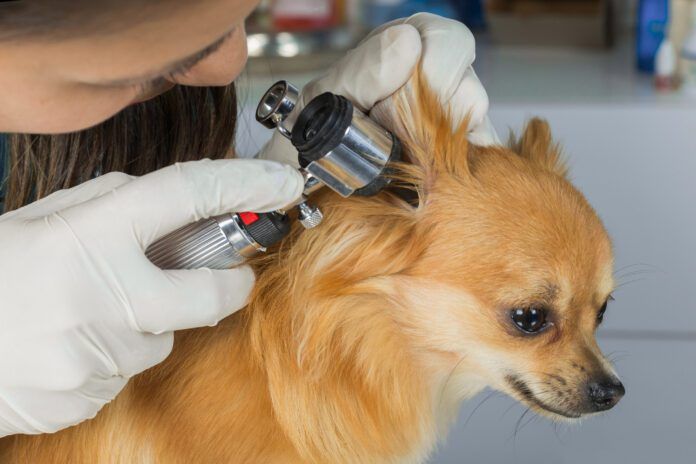Your dog naturally has yeast on her body, and it normally doesn’t cause trouble. The issue is when it grows out of control. Dog ears – especially floppy drop ears – are a perfect home for a variety of microbes including yeast. These ears are enclosed and warm, so all that is needed is a little moisture and/or irritation and an infection can be at hand.
Possible causes of yeast infections include:
- Chronic moisture in the ear from lots of swimming or baths
- Bacterial infection
- Debris stuck in the ear
- Damage to the ear drum
- Allergies
- A tumor or polyp in the ear canal
What Does a Yeast Infection Look Like on a Dog?
If you search for “yeast dog ear infection picture,” you’ll come up with a lot of photos of dogs with grimy-looking or reddish ears. Yeast infections do frequently cause a characteristic light brown, waxy exudate inside the ear, but appearance alone isn’t reliable. Bacterial infections in the ear can look similar, or there may be multiple issues occurring at the same time.
Besides that gross, waxy debris in your dog’s ears, other signs that you may notice include:
- Scratching or rubbing at the ears
- Ears sensitive to touch
- A distinct odor, often compared to corn chips
- Red, inflamed ears
- Head tilt
- Neurological signs such as stumbling, circling, and falling over in severe cases
Time to See the Vet
The only way to be sure that your dog’s troubles are caused by yeast is to have your veterinarian do an ear cytology, which involves swabbing the exudate in the ear and examining it under a microscope. This allows the veterinarian to see what infectious agents are present and prescribe the right medication to treat that problem.
If your dog is up to date on her wellness exams, your veterinarian may allow you to drop off an ear swab without bringing your dog in for an appointment. However, if the symptoms are severe, return after treatment, or don’t improve at all, your dog will need a physical exam, so the veterinarian can look inside the ear canal and check out the ear drum. This can be an important step, because some ear medications like the long-acting Claro can cause deafness if applied in an ear with a ruptured ear drum.





